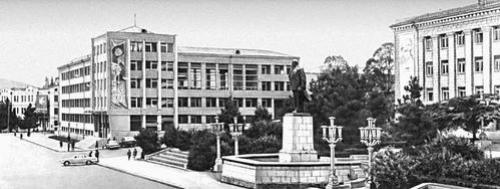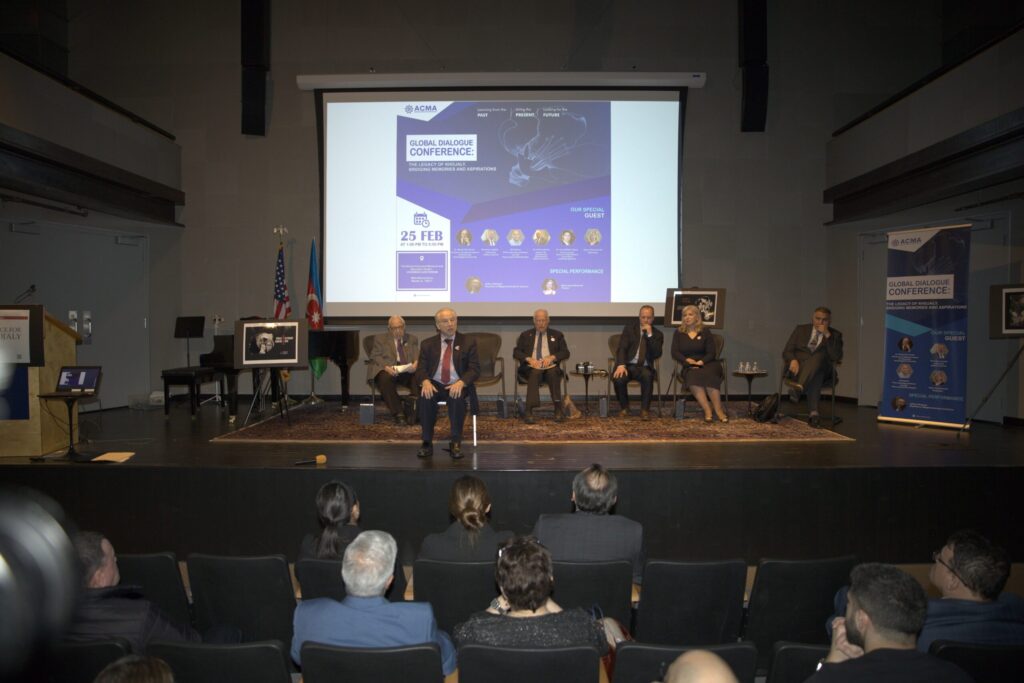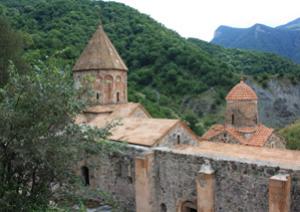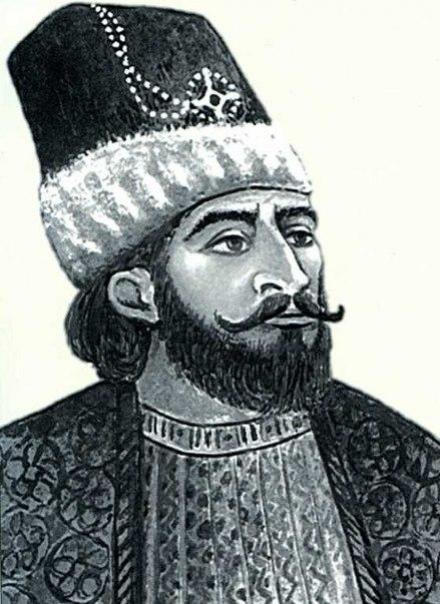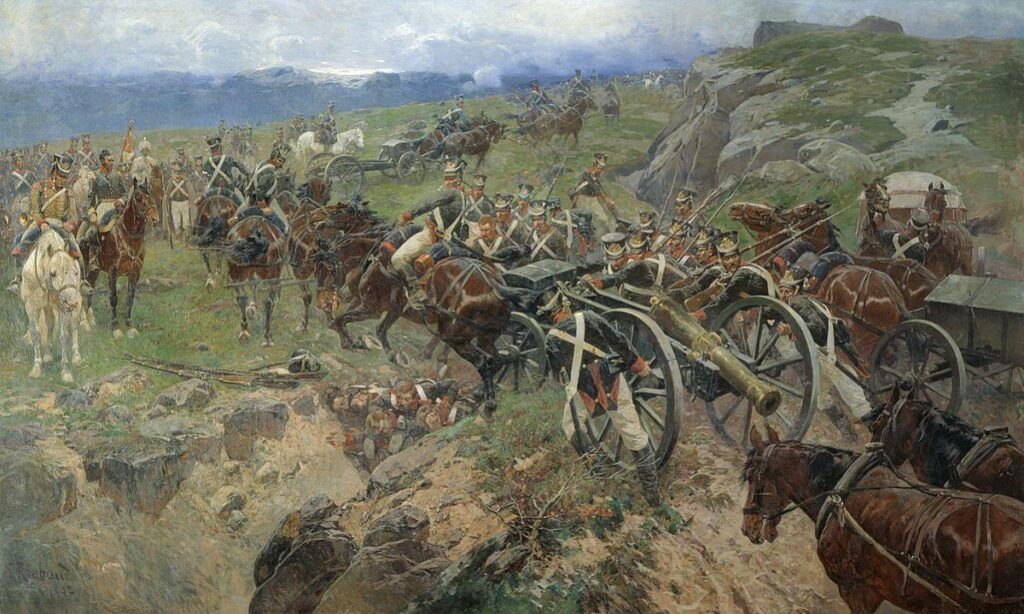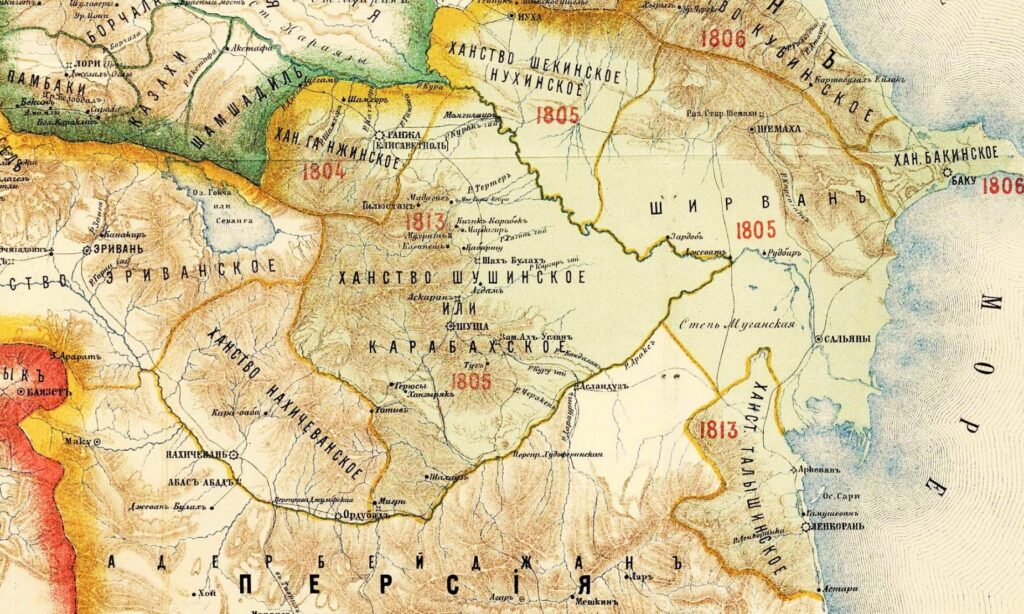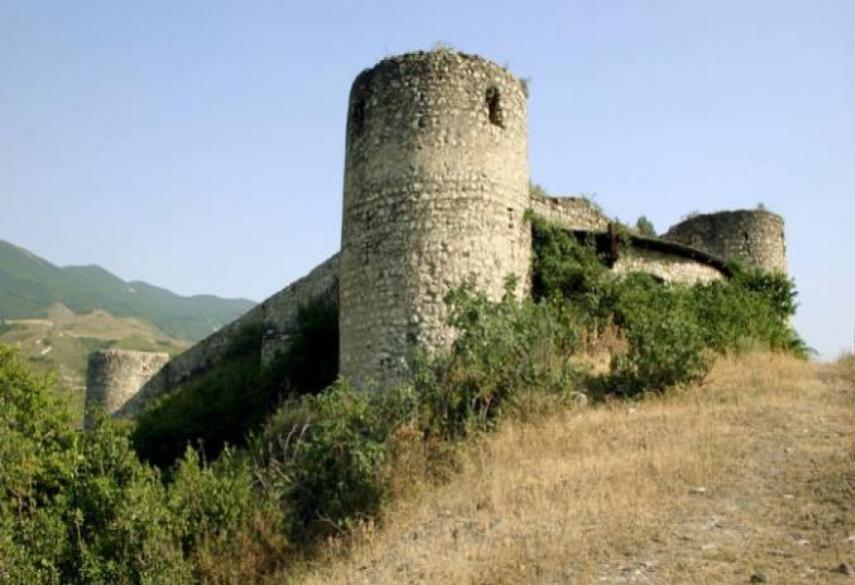Karabakh in 1920-1980
With the strengthening of Soviet government the process of restoration of the tsarist Russian border began. The 11th Red Army concentrated its forces on northern borders of the Azerbaijan Democratic Republic and received several orders and decrees for the occupation of Azerbaijan. The powers which supported the Soviet state within the Azerbaijan Parliament and the March revolt of Armenian Dashnak separatists in Karabakh accelerated the overthrow of the Azerbaijan Democratic Republic. The Azerbaijan Democratic Republic existed for 23 months and was overthrown by the 11th Red Army and the Soviet government was established in the Northern Azerbaijan. Thus, the situation around Karabakh entered a new stage.
Daghlig Garabagh: geography and the concept of Daghlig Garabagh. For lightning this problem let’s first stay on the geography of Daghlig Garabagh and the concept “Daghlig Garabagh.
The territory of Karabakh is divided into plains and mountainous areas for its landscape. This is a scientifically approved fact. Thus, A.M.Skibitski, the son of the famous Caucasus scientist M.A.Skibitski in his artcle entitled “The Caucasus revolt” said: “The mountainous region of Karabakh Khanate was once called Daghlig Garabagh. It comprised of an area between the Karabakh mountains on the east and the Zangezur mountains on the west, as well as the Karabakh plateau, separating Daghlig Garabagh from plain Lower Karabakh”. As seen, due to the fact that the lands of the Karabakh khanate as part of Tsarist Russia were subject to to different administrative divisions, the concept of Karabakh had lost its original administrative-political meaning. However, in periods of the Azerbaijan Democratic Republic (1918-1920) the concept of Karabakh acquired its initial definition. As seen from the foregoing viewpoint of S.Shaduns, the term of Daghlig Garabagh was established by Dashnaks at that very time.
Since that time the concept of “Daghlig Garabagh” acquired not only geographical but also political importance. With the establishment of the Bolshevik power in North Azerbaijan this concept became important from the administrative and political point of view and turned to the principal concept in the political lexicon of Azeri-Armenian relations and Russia, which backed the latter. At that time the surrounding of Daghlig Garabagh changed geographically. Again we refer to the writings of A.M.Skibitski that are as follows: “…The Karabakh plateau was attached the status of autonomy in 1923 and was called the Autonomous Province of Daghlig Garabagh or briefly “Daghlig Garabagh” within the new bounds of Azerbaijan.
On 28 April 1920, the Soviet Socialist Republic of Azerbaijan (hereinafter – Azerbaijan SSR) was established. The facts illustrate that over the 70-years of the Soviet rule the Armenians succeeded in expanding their territory at the expense of Azerbaijan and expelling the Azerbaijanis from their historical lands. During this period, aforementioned policy was implemented systematically and methodically. As a result, the territory of Azerbaijan, which in 1918-1920 constituted 114.000 sq.km, was reduced to 86.600 sq.km during the Soviet rule.
On 30 November 1920, the western part of the Zangazur uezd was included in Armenia. As a result, Nakhchyvan region was cut off from the mainland of Azerbaijan.
On 13 October 1921, the Treaty of Friendship between the Armenian SSR, Azerbaijan SSR and Georgian SSR, on the one hand, and Turkey, on the other, was concluded in Kars with the participation of the Russian Soviet Federative Socialist Republic. In Article 5 of the Treaty the Governments of Turkey, Armenia, and Azerbaijan expressed their consent that “the Nakhchyvan oblast […] forms an autonomous territory under the protection of Azerbaijan”.
From 12 March 1922 to 5 December 1936 Azerbaijan was a part of the Transcaucasian Soviet Federative Socialist Republics (hereinafter – TSFSR). Until the admission of Azerbaijan into the TSFSR, Basarkechar region of New-Bayazid uezd of the Russian Empire borders and 2/3 of Sharur-Daralayaz uezd were already included in Armenia. After the admission of Azerbaijan into the TSFSR a considerable portion of Gazakh uezd, a number of villages from Jabrayil uezd and the Autonomous Soviet Socialist Republic of Nakhchyvan (hereinafter – Nakhchyvan ASSR) were included in Armenia.
On the pretext of resettling the Armenians coming from abroad, the Council of Ministers of the USSR adopted on 23 December 1947 and 10 March 1948 special decisions on the resettlement of collective farm workers and the other Azerbaijani population from the Armenian SSR to the Kur-Araz lowlands in the Azerbaijan SSR. Under these decisions, during the period between 1948 and 1953 more than 100,000 Azerbaijanis were forcibly resettled from their historical homelands – the mountainous regions of Armenia – to the then waterless steppes of Mughan and the Mil plateau.
The Nagorno-Karabakh Autonomous Oblast of Azerbaijan SSR
As far as Nagorno-Karabakh is concerned, in response to territorial claims of the Armenian SSR regarding this region of Azerbaijan, on 5 July 1921, the Caucasian Bureau of the Central Committee of the Russian Communist (bolshevik) Party decided that:
Taking into consideration the necessity of national peace between the Muslims and the Armenians, the importance of the economic relations between Upper and Lower Karabakh and the permanent relations of Upper Karabakh with Azerbaijan, Nagorno-Karabakh shall be retained within the boundaries of the Soviet Socialist Republic of Azerbaijan and broad autonomy shall be given to Nagorno-Karabakh with Shusha city as an administrative center.”
On 7 July 1923, the Nagorno-Karabakh Autonomous Oblast (NKAO) was established in the mountainous part of Karabakh, where majority of population was Armenian. The town of Khankandi was defined as the administrative centre of the autonomy. In September 1923, the name of the town was changed to Stepanakert after Stepan Shaumian, dashnak and “bolshevik” leader.
Nagorno-Karabakh Autonomous Oblast (NKAO)is in the South-eastern part of the Minor Caucasus.Lesser Caucasus in the south-eastern part of the region. The landscape is mostly daghqdır. Murovdagh the northern part of the province of the chain (Gamıs the highest peak of Lesser Caucasus mountain – 3,724 m) in the southern slopes of the central, western and southern parts of the northern slopes of the Karabakh Range (Gizgala mountain – 2,843 m, Qirkhqiz mountain – 2,827 m, the Great Kirs mountain – 2,725 m) the north-eastern part of the plain (the western edge of the plains of Karabakh and Mil) holds.
The borders of the NKAO were defined in a way to ensure the majority to the Armenian population.National composition of Daghlig Garabagh Autonomous Province (by a census enumeration: thousand people)
| National composition | 1939 | 1959 | 1970 | 1979 | ||||
| absolute | % | absolute. | % | absolute | % | absolute | % | |
| Whole population | 150,8 | 100 | 130,4 | 100 | 150,3 | 100 | 162,2 | 100 |
| armenians | 132,8 | 88,1 | 110,1 | 84,4 | 121,1 | 80,5 | 123,1 | 75,9 |
| Azerbaijanis | 14,1 | 9,4 | 18,0 | 13,8 | 27,2 | 18,1 | 37,3 | 23,0 |
| Russian | 3,2 | 2,1 | 1,8 | 1,4 | 1,3 | 0,9 | 1,3 | 0,8 |
(Taken from Достижения Нагорного Карабаха в девятой пятилетке. Стат. сб. Степанакерт, 1976, с.8, Самедзаде З. Нагорный Карабах: Неизвестное о некоторых аспектах социально-экономического и демографического развития региона, Баку, 1995, с.31.)
According to the population census of 12 January 1989, the population of the autonomous oblast was around 189,000 persons; of them: around 139,000 Armenians – 73,5 %, around 48,000 Azerbaijanis – 25,3 %, around 2 000 representatives of other nationalities – 1,2 %. At the same time, about 200,000 Azerbaijanis compactly resided in Armenia at that time were refused even cultural autonomy both on the part of the USSR central government, and the government of the Armenian SSR.
The allegations of discrimination against the Armenian population of Nagorno-Karabakh do not stand up to scrutiny. In reality, the NKAO possessed all essential elements of self-government.
The status of Nagorno-Karabakh as an autonomous oblast within the Azerbaijan SSR was stipulated in the Constitutions of the USSR of 1936 and 1977. In accordance with the Constitutions of the USSR and the Azerbaijan SSR, the legal status of the NKAO was governed by the Law “On the Nagorno-Karabakh Autonomous Oblast”, which was adopted by the Supreme Soviet of the Azerbaijan SSR on 16 June 1981 following its submission by the Soviet of People’s Deputies of the NKAO. As a national territorial unit, the NKAO enjoyed a form of administrative autonomy and accordingly, had a number of rights, which in practice, ensured that its population’s specific needs were met. Under the Constitution of the former USSR, the NKAO was represented by five deputies in the Council of Nationalities of the Supreme Soviet of the USSR. It was represented by 12 deputies in the Supreme Soviet of the Azerbaijan SSR.
The Soviet of People’s Deputies of the NKAO — the government authority in the region — had a wide range of powers. It decided all local issues based on the interests of citizens living in the oblast and with reference to its national and other specific features. Armenian language was used in the work of all government, administrative and judicial bodies and the Procurator’s Office, as well as in education, reflecting the language requirements of the majority of the region’s population. Local TV and radio broadcasts, publication of newspapers and magazines in the Armenian language were guaranteed in the NKAO.
In the period 1971 to 1985, 483 million rubles of capital investment were channeled into the development of the NKAO, 2.8 times more than in the previous 15-year period. Over the preceding 20 years, the volume of per capita capital investment had increased nearly fourfold (226 rubles in 1981-1985 against 59 rubles in 1961-1965). Over the preceding 15 years, per capita housing construction had amounted to 3.64 square meters in Azerbaijan as a whole, whereas for the NKAO the figure was 4.76 square meters. The number of hospital beds per 10,000 inhabitants was 15 per cent higher than in the rest of the republic.
The NKAO ranked relatively high among the republic’s regions in terms of the number of pre-school places available. Thus, in the period 1971 to 1985 the increase in the number of places in children’s institutions per 10,000 inhabitants in the oblast was 1.4 times of the average for the republic. The same is true of the increase in the number of places per 10,000 inhabitants in schools providing general education, the NKAO being ahead by a factor of 1.6.
The fact that provision of housing, goods and services was superior to that in the republic as a whole was typical of the social and cultural development of the oblast. Per capita living space in apartment buildings in the region was almost one third greater than the average for the republic, while rural dwellers had 1.5 times more living space than peasants in the republic as a whole.
The population of the oblast had access to greater numbers of medium-level medical personnel (1.3 times more) and hospital beds (3 per cent more). There was a more extensive network of institutions providing cultural and information services (more than three times the number of cinemas and clubs and twice as many libraries), and there were 1.6 times more books and magazines per 100 readers.
In fact, the NKAO was developing more rapidly than Azerbaijan as a whole. For example, whereas industrial output in the republic increased threefold between 1970 and 1986, in the NKAO it grew by a factor of 3.3 (the rate of growth there was 8,3 per cent higher). In 1986, 3.1 times more fixed capital assets were brought into use in the oblast than in 1970; in the republic the figure was 2.5. As far as basic social development indicators were concerned, the NKAO exceeded the average republic-wide standard of living indicators in the Azerbaijan SSR. There was significant progress in the development of cultural establishments, both in the oblast and throughout the republic.
In the 1988/89 school year, there were 136 secondary general education schools in Nagorno-Karabakh using Armenian as the language of instruction (16,120 pupils) and 13 international schools (7,045 pupils). In Azerbaijan as a whole during that school year, there were 181 Armenian schools (20,712 pupils) and 29 international schools (12,766 pupils). The State Pedagogical Institute in Khankandi had more than 2,130 students, mostly Armenian, studying in its Azerbaijani, Armenian and Russian divisions. In addition, Nagorno-Karabakh had dozens of specialized secondary schools and vocational training institutes offering instruction in Armenian and Russian.
Five independent periodicals appeared in the Armenian language. Unlike other administrative territorial units of Azerbaijan located far from the capital of the republic in mountainous areas, the NKAO was equipped with technical infrastructure for receiving television and radio programmes.
As has been seen above, and as the existence and development of the NKAO within Azerbaijan confirms, the form of autonomy that had evolved fully reflected the specific economic, social, cultural and national characteristics of the population and the way of life in the autonomous region.
Armenians in Baku in 1828 in the absence of any registered 170 thousand in 1988, there were 130 thousand Armenians registration. 500 thousand Armenians living in the country. The 500 thousand Armenian Azerbaijani trade, government offices and businesses occupied the leading positions. Baku, the Azerbaijan Communist Party Central Committee and the Committee for a long time secretaries (the first secretary), the Central Executive Committee of the Azerbaijan Soviet Socialist Republic, the Supreme Soviet, the Council of People’s Commissars, the Council of Ministers, deputy director, division chiefs, ministers, heads of committee chairmen and other key positions in the management worked. Baku, the Azerbaijan communist Party Central Committee and the Committee for a long time secretaries (the first secretary), the Central Executive Committee of the Azerbaijan Soviet Socialist Republic, the Supreme Soviet, the Council of People’s Commissars, the Council of Ministers, Deputy Director , Division Chiefs, ministers, heads of committee chairmen and other key positions in the management worked
The Armenians of the great posts in Azerbaijan until 1990
1. A.A.Ayriyan – Minister of Forestry and Wood Processing Industry of the Azerbaijan Soviet Socialist Republic;
2. V.N.Nersesyan – Kirov district of Baku city, Fisrt Secretary of the Party Committee;
3. N.V.Gabrielyan – vice- chairman of “Azerittifag”
4. A.S.Bejanyan — Investigation Department of the Prosecutor’s Office of Azerbaijan SSR, prosecutor
5. S.M.G.Ohanjanyan – Azerkendkimya Association, First Deputy Chairman
6. B.A.Ayrapetov – Deputy Chairman of the Baku City Executive Committee, Chairman of the Department of City Planning;
7. J.S.Sarkisova –prosecutor at Monitoring Department for Criminal Cases in the Courts of Baku City Prosecutor’s Office
8. R.M.Gazaryan – Proecutor at Monitoring Department over the observance of laws in Rehabilitation Institutions
9. N.A.Melkumyan – the chief accountant of the Prosecutor’s Office of Azerbaijan SSR. . .
10. L.V.Ohanesyan – Baku city Prosecutor’s Office chief of special and common unit;
11. A.S.Gevorkyan – Director of Office of Public Prosecutor of the Azerbaijan SSR;
12. E.S.Gasparyan – assistant prosecutor in charge of monitoring the implementation of traffic laws;
13. E.S.Petrosyan – Inspector’s Office of the Azerbaijan Soviet Socialist Republic;
14. O.V.Parsadanov – Department of the Prosecutor of the State Security Committee;
15. A.A.Arzumanyan – Baku Repair Building Trust Director, Member of City Council;
16. A.S.Hambarsumov – Bureau of the Communist Party of Lenin district committee member and chairman of the party, as well as, the District Party Committee;
17. R.S.Baghiryants – “Xazarneftqazsanaye” Industry Association of the Soviet Union, deputy chief, Candidate of Economic Sciences, an honorary fellow of the Soviet gas industry;
18. M.B.Bunyatyan –Industrial Construction Bank of the USSR, Operating Office Chairman;
19. L.I.Vartapetyan – 1st Deputy Chief of Baku water pipeline, Azerbaijan Soviet Socialist Republic of housing and communal services worker;
20. S.N.Haykazyan – chief engineer of Baku Gaz Production Department
21. V.P.Yegizarov – Deputy Chairman of the Ezecutive Committee of the Soviet of People’s Deputies of Lenin district
22. A.X. Ohanyan – chief engineer of the Sanitation Department
23. R.V. Safaryan – Construction office complex brigade-learder at Social and Cultural Facilities Construction Trust No.9, a member of Communist Party of Baku City Committee
24. N.R. Shahnazaryan – Chairman of the Executive Committee of the People’s Deputy Council of Nizami district
Source :
Yusif Gazıyev, Armenian Case, Baku, 2009

